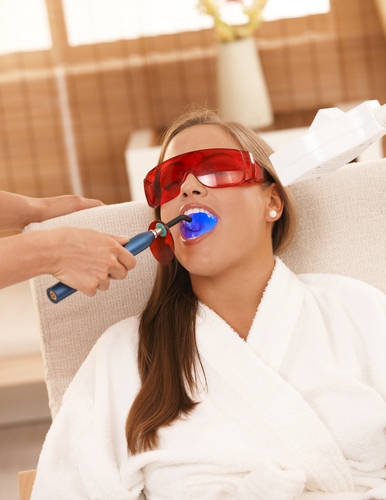Laser dentistry can sound like an intimidating concept if you’re hearing about it for the first time. Usually when lasers are referenced it’s in regard to technology or science inventions, but did you know that lasers can remove your tooth decay with more comfort and less recovery time than a dentist’s drill?
How do lasers work?
Lasers get energy from light that is concentrated into a tight beam. Instead of cutting, lasers vaporize the decay and damaged gum tissue. Once the cleaning is finished, dentists use the lasers to solidify the bonding of fillings.
What does laser dentistry do for my teeth?
There are a number of reasons why laser dentistry is preferred to traditional drills for both patients and dentists. Lasers cause less damage than drills because they are more accurate in targeting only the dark, soft areas of the teeth that are decaying. They are small enough to clean just the outer areas of your crowns where plaque forms. The decay that forms in the area inbetween the teeth and gums is always the most painful part of teeth cleaning, but lasers can squeeze into those small places with no harm to the patient. Most recently, dentists have discovered ways to detect decay without using x-rays which completely eliminates all exposure to radiation.
Why Should I Try Laser Dentistry?
The most glaring improvement of lasers compared to drills is the extreme accuracy. Drills touch other surface areas of the tooth that don’t need work, whereas lasers actually target the spot. Lasers are completely silent machines that have no side effects like pain, gum bleeding and possible infection from open wounds after a cleaning.
The dentists at Greenspoint Dental in Houston, Texas, are experts in laser dentistry. Contact Greenspoint today for an laser cleaning to remove your tooth decay and avoid cavities now and in the future.

